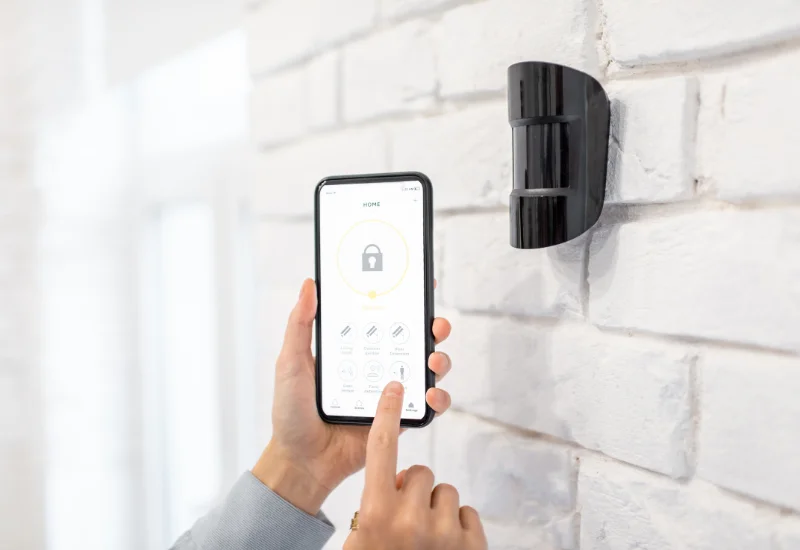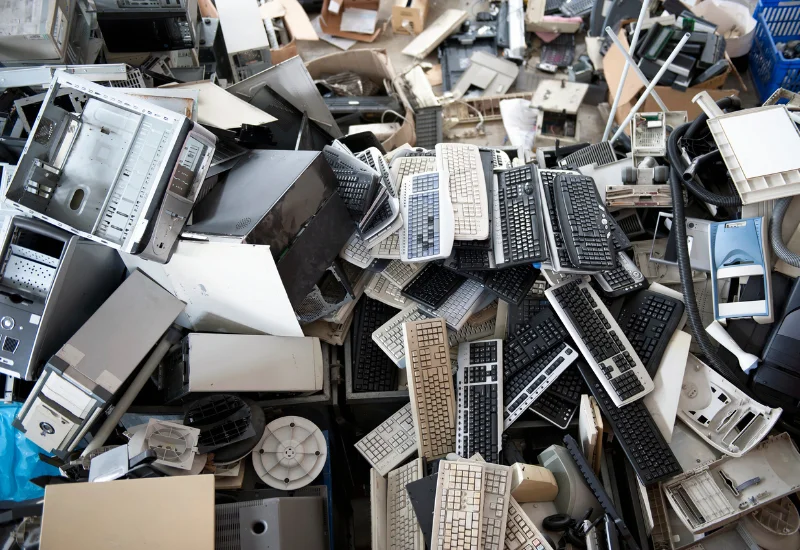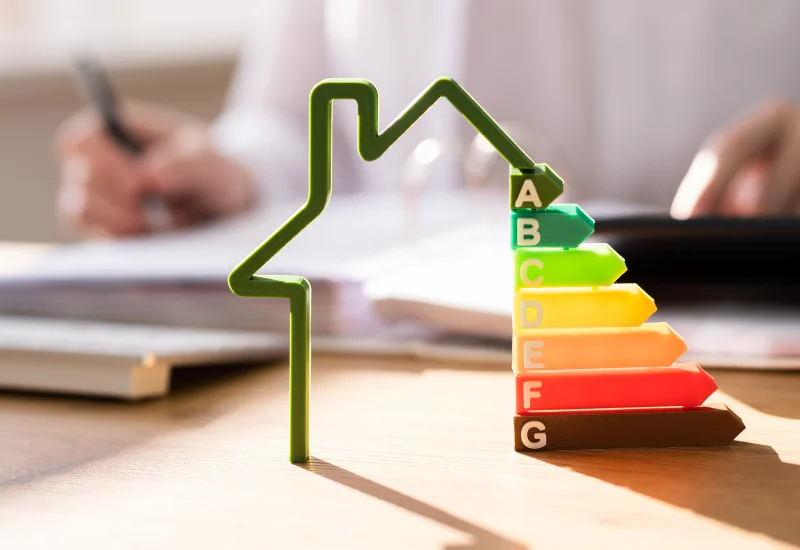
Dec 04, 2025
Written by Pieter-Jan - Written: June 4, 2025

Creating a sustainable workplace is not only beneficial for the environment but can also improve your company’s reputation, employee engagement, and cost-efficiency. To help you get started, we’ve compiled a list of 9 green workplace initiatives that are easy to implement. Plus, be sure to check out our office management tools for 2023 for additional ideas.
Transitioning to a paperless office can significantly reduce your environmental impact while streamlining your processes. With the rise of digital technology, it has become increasingly easy to eliminate paper from your workplace.
One of the first steps to going paperless is to replace traditional paper-based visitor logs with a digital visitor registration system. Digital visitor management systems not only reduce paper waste but also improve security and efficiency. These systems allow you to easily track and manage visitors, automate notifications, and ensure compliance with regulations like GDPR. For more information on GDPR and visitor management, refer to our GDPR visitor management guide.
In addition to visitor registration, consider using electronic document management systems to store, share, and sign documents electronically. This can include cloud-based storage solutions, electronic signature platforms, and collaborative work tools like Google Workspace or Microsoft 365. By going paperless, your company can save on printing and storage costs while reducing its carbon footprint.
Remote and hybrid working can reduce the carbon footprint associated with commuting and the need for large office spaces. As more companies embrace flexible work arrangements, the environmental benefits become increasingly apparent.
Encouraging employees to work from home whenever possible can lead to a significant reduction in greenhouse gas emissions associated with commuting. Furthermore, remote work can help reduce energy consumption in office buildings, as well as cut down on waste generated from disposable food packaging and office supplies.
For companies that require some in-person collaboration, a hybrid work model can provide the best of both worlds. By allowing employees to work from home part of the week and come into the office on designated days, you can still reap the benefits of reduced emissions and energy consumption. In addition to the environmental benefits, hybrid work models can also lead to increased employee satisfaction and productivity.

Setting up a recycling program in the office is a simple way to reduce waste and promote sustainability. By providing recycling bins for paper, plastic, glass, and other recyclables, you encourage employees to dispose of waste responsibly.
It’s essential to educate employees on proper recycling practices, as improper recycling can lead to contamination and reduce the effectiveness of recycling efforts. Offer training sessions, informational posters, and regular updates on recycling best practices to ensure your program’s success.
In addition to traditional recycling, consider implementing an e-waste recycling program to responsibly dispose of electronic devices like computers, printers, and mobile phones. E-waste contains hazardous materials that can harm the environment if not properly recycled. Partner with a certified e-waste recycling provider to ensure your electronics are handled responsibly.
Reducing energy consumption is a crucial aspect of creating a green workplace. One of the easiest ways to achieve this is by switching to energy-efficient LED lighting and Energy Star-rated appliances.
LED lights consume up to 80% less energy than traditional incandescent bulbs and have a much longer lifespan, making them an excellent choice for office lighting. In addition to being energy-efficient, LED lights produce less heat, which can help reduce air conditioning costs during warmer months. Consider replacing all incandescent and fluorescent bulbs with LEDs, and invest in motion-activated light switches to further optimize energy usage. Here is a helpful guide for office lighting design.
When purchasing office equipment and appliances, look for those with Energy Star ratings. These products meet strict energy efficiency guidelines set by the U.S. Environmental Protection Agency and the Department of Energy, ensuring they consume less energy and save on utility costs. Energy Star-rated appliances include computers, printers, copiers, televisions, and more.
Another way to improve energy efficiency is by installing smart thermostats and upgrading your HVAC system. Smart thermostats can automatically adjust temperature settings based on occupancy, time of day, and other factors, helping to reduce energy waste. Additionally, regular maintenance and upgrades to your HVAC system can significantly improve its efficiency and reduce energy consumption. There are tools that make HVAC system maintenance a breeze, such as Climapulse.

Promote the use of public transportation, carpooling, biking, or walking to work as an eco-friendly alternative to single-occupancy vehicle commuting. Offer incentives such as discounted public transit passes or secure bike storage facilities for employees who choose green commuting options.
Encourage employees to use public transportation by offering subsidized transit passes or reimbursement for transit expenses. This not only helps reduce emissions from personal vehicles but also alleviates traffic congestion and reduces the need for parking spaces.
Set up a carpooling or ridesharing program for employees who live near each other, reducing the number of vehicles on the road and associated emissions. Establish a designated carpool parking area or offer preferential parking spots for carpool participants as an added incentive.
Promote biking and walking to work by providing secure bike storage, shower facilities, and locker rooms for employees. You can also organize events like “Bike to Work Day” or walking challenges to further encourage active transportation.
Improving indoor air quality is essential for creating a healthy and productive work environment. Poor indoor air quality can lead to a variety of health issues, including allergies, headaches, and respiratory problems.
Use low-VOC (volatile organic compound) paints and materials in your office to reduce the release of harmful chemicals into the air. VOCs can contribute to indoor air pollution and have been linked to adverse health effects.
Ensure that your office space has proper ventilation to circulate fresh air and remove indoor pollutants. Regularly maintain and clean air ducts, filters, and HVAC systems to maximize efficiency and minimize the buildup of dust and contaminants.
Adding air-purifying plants to your office can help remove pollutants and improve air quality naturally. Some popular options include the snake plant, spider plant, and peace lily. In addition to improving air quality, plants can also enhance the overall aesthetic of your workspace and promote a sense of well-being.

Replace single-use items like plastic utensils, disposable coffee cups, and water bottles with reusable alternatives. Encourage employees to bring their own reusable water bottles, coffee mugs, and lunch containers to reduce waste.
Invest in reusable office supplies such as refillable pens, whiteboard markers, and rechargeable batteries. This not only reduces waste but can also save your company money in the long run.
Reduce or eliminate single-use plastics in your office by providing reusable alternatives like metal or bamboo cutlery, cloth napkins, and glass storage containers. Encourage employees to use these items instead of disposable options, and consider implementing a “bring your own” policy for cups and containers.
In addition to providing reusable supplies, set up recycling and composting stations in break rooms and common areas to capture waste that cannot be reused. Composting can help divert organic waste from landfills, reducing methane emissions and creating nutrient-rich soil.
Adopt green procurement policies by sourcing eco-friendly products and materials for your office. Choose suppliers with strong environmental commitments and certifications to ensure sustainable practices.
Purchase office supplies made from recycled or sustainably sourced materials, such as recycled paper, biodegradable pens, and non-toxic cleaning products. Look for certifications like FSC (Forest Stewardship Council) and Green Seal to ensure the products meet specific environmental standards.
When purchasing furniture and equipment, opt for items made from sustainable materials and designed for durability and longevity. Seek out companies that prioritize energy efficiency, responsible sourcing, and recyclability in their manufacturing processes.
Work with suppliers that share your commitment to sustainability and are transparent about their environmental policies. This not only helps to ensure that your office is stocked with eco-friendly products but also sends a strong message to stakeholders about your company’s dedication to environmental responsibility.

Regularly conduct energy audits to identify areas where your office can improve its energy efficiency. Implementing the recommended changes can lead to significant energy savings and a reduced carbon footprint.
Hire a professional energy auditor to assess your office’s energy consumption and provide recommendations for improvement. This can include upgrading lighting, HVAC systems, insulation, and windows, as well as identifying opportunities for renewable energy sources such as solar panels.
Encourage employees to participate in energy-saving initiatives by conducting regular energy-saving challenges or creating a “green team” to spearhead sustainability efforts. Educate employees on simple energy-saving habits, like turning off lights and electronics when not in use, and provide incentives for participation.
By incorporating these 9 green workplace initiatives, you can make a positive impact on the environment while enhancing your company’s image and reducing costs. For more ways to create a sustainable workplace, explore our blog on topics like going paperless with a digital office, replacing your paper visitor log, embracing hybrid working, and discovering 8 ways businesses can help fight climate change.
To get a feel of how a modern visitor management system can help your business, try out Vizito during a 14-day trial. Chat with us or book a demo to discuss how Vizito can help you improve your reception.